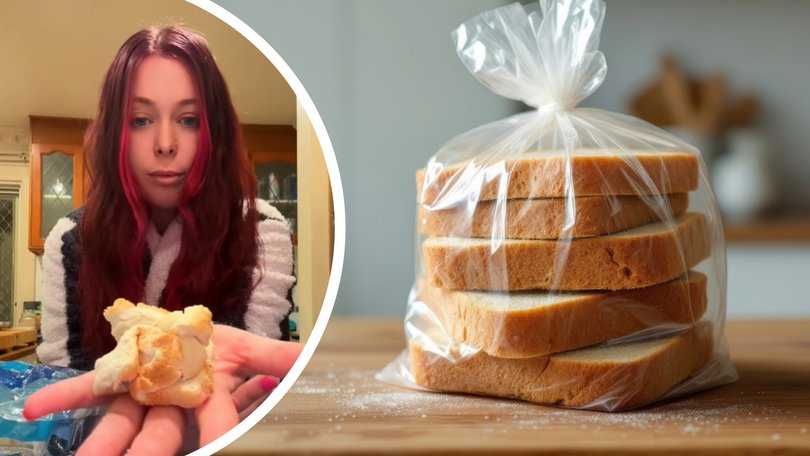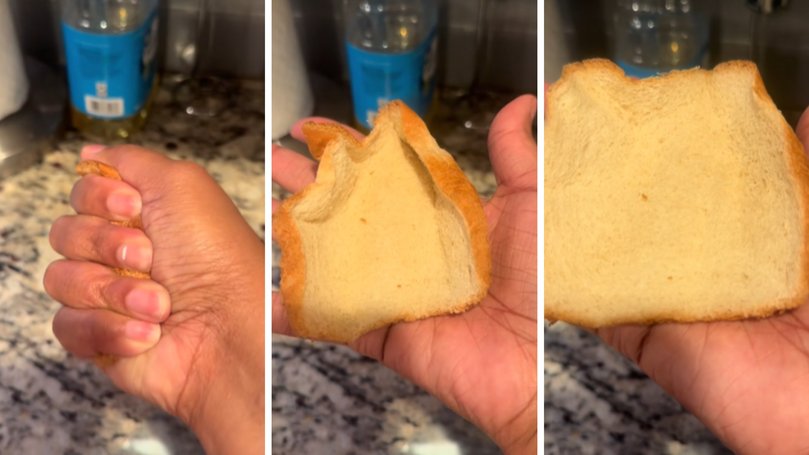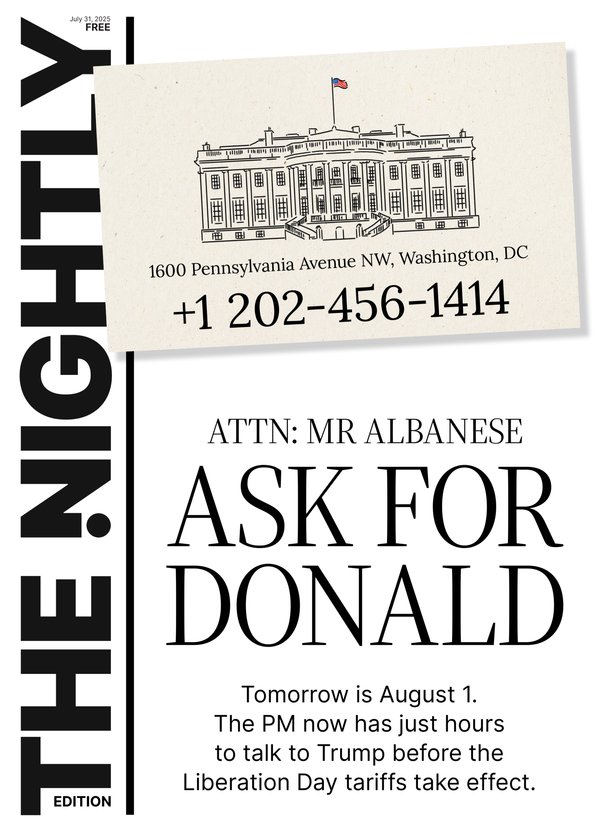‘Memory foam bread’ TikTok trend horrifies Aussies as they compare Australian slices to USA ones

A new social media trend involving squishing down bread only to watch it bounce back into its original form has left Aussies in disbelief.
Videos posted on TikTok have revealed the disturbing truth behind bread in the US, which reforms itself ‘like memory foam’ due to excessive additives.
In one TikTok video, which has more than three million views, an American woman shares a clip of her folding a slice of bread into the palm of her hand to test the theory that the bread will expand into its original form.
Sign up to The Nightly's newsletters.
Get the first look at the digital newspaper, curated daily stories and breaking headlines delivered to your inbox.
By continuing you agree to our Terms and Privacy Policy.“There it goes, it literally starts unfolding, that is crazy to me,” she says as the bread unravels.
The videos have caught the attention of Aussies, who have flooded the videos with comments; claiming the bread in the US must be different from the bread in Australia.
“In Australia, when you spread Nutella on the slice you rip a hole in it,” wrote one.
“In Australia, when you put the bread in the shopping bag at the checkout, it always goes on top because once it’s squished, it’s forever squished,” said another.
“That is truly horrifying” wrote a third.
The now-viral trend has also sparked backlash from Aussie influencers who tested the bread-squishing trend themselves, demonstrating that Australian bread would stay squashed when pressed.

One Aussie shared a video of her squishing a white slice of bread to see if it ‘bounces back.’
“Hey America . . . I notice you’ve got some very different bread to what the rest of the world has, or at least Australia,” she says.
After pressing the slice of bread into a ball she drops it on the counter in front of her to show it’s still squished.
“That’s normal bread,” she states at the end of the video.
The debate has grown into a international one; European’s have been chiming in on the argument, with one influencer showing that even shop bought Italian sliced bread unravels.
“As you can see this high quality European Italian bread also acts like memory foam,” she explains while watching a slice of bread bounce back.
Commenters on the video disputed that the bread was from Italy and made claims about bread from other countries.
“That’s not Italian bread!!!!” wrote one.
“African bread never ever bounces back,” said another.
Aside from the videos, the differentiating factor that may divide American sliced bread from other countries is what it’s composed of.
American bread is typically made using five food additives: Azodicarbonamide (whitening and dough conditioner), Potassium bromate and iodate (rising agents), BHA and BHT (preservatives).
Australia and many other countries have imposed strict bans on Azodicarbonamide, Potassium bromate and iodate, which have been linked to cancer and asthma – but they are still allowed to be used in US food products.
However, wherever it’s made, packaged mass-produced sliced bread have been found to be an ultra processed food by academics.
“UPF has a long, formal scientific definition, but it can be boiled down to this: if it’s wrapped in plastic and has at least one ingredient that you wouldn’t usually find in a standard home kitchen, it’s UPF,” says Dr Chris van Tulleken in his book.
Originally published on PerthNow

